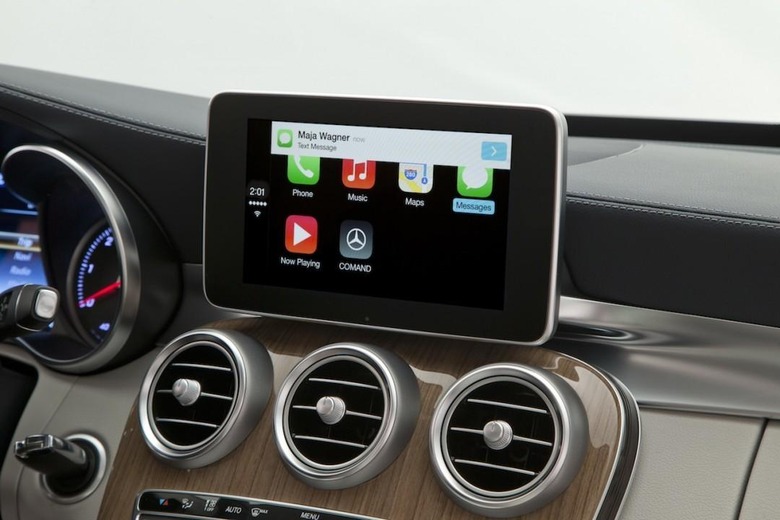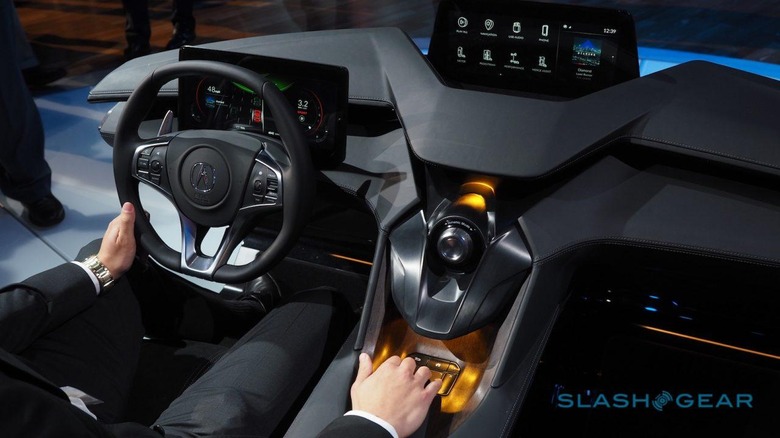Learning To Love Apple CarPlay
If Apple is truly working on a car, as all the rumors suggest, then CarPlay is the visible tip of that iceberg. While I appreciated Apple's aim of distilling the familiar essentials from your iPhone in a way that was both safe and convenient while you're driving, it's taken me some time to appreciate what the fairly barebones interface has to offer. Still, it's more of a Stockholm syndrome relationship than I'd care to admit: I'm warming to CarPlay primarily because most in-car systems are so bad.
Some things, Apple certainly gets right. I've tried it with many dozens of vehicles, and the consistency is admirable, both of the UI itself and of how straightforward it is to connect and reconnect. Clearly, pairing a phone while already driving is A Bad Thing To Do and I don't recommend it. All the same, plugging an iPhone in with a Lightning cable and tapping "yes" on the dialog that gives CarPlay permissions even when the screen is locked is a lot less demanding than trying to do the Bluetooth fumble, attempting to search, select, approve the PIN, and then wait for the connection to be set up before the lights change and you get locked out of the whole process when you pull away.
You can now rearrange the order of apps on the CarPlay homescreen, though it's on a per-car basis and there's no way to modify the initial default if you switch vehicles regularly. CarPlay co-exists well with existing infotainment services, too. Whether automakers have their UI pop up on top of Apple's interface when you adjust HVAC settings or change the volume, or if they switch away to their own menus, invariably you're returned to CarPlay once that's done.

All the same, the list of things that first frustrated me about CarPlay is pretty much untouched despite the time in-between. I'm still annoyed that I can't use Google Maps (or Waze, or any other navigation app) instead of Apple Maps. Yes, Apple's own mapping software has improved significantly since its fairly disastrous launch, but until it's offered cross-platform all my saved locations are staying in Google Maps.
The same limits apply to other apps, of course: I still can't place calls through Google Voice on CarPlay, for instance, only with Apple's own dialer. The argument was always that by locking down what could be run in the CarPlay interface, Apple could ensure that software was sticking to its UI guidelines and not be a distraction on the road. I'm certainly all for best-practice, but it's almost three years after it launched, and I suspect motivated developers could've figured out how safe interfaces operate in that period were Apple more receptive to their services.
If there's a faint ray of hope, it's Apple's gradual loosening of some of its legendary demands for control on iOS. The more recent releases have opened features like replying directly from notifications up to third-party apps, where once they were limited to Apple's own software, in addition to choosing your own default keyboard. While it may not be the "pick your own preferred app" free-for-all as with Android, I'm willing to take what I can get.
Perhaps the primary reason I'm increasingly enamored of CarPlay (and, indeed, of Android Auto), though, is that it lit a fire under the complacent backsides of automakers themselves. The average infotainment system in a recently-released car may be clunky in places, but a few years ago they were significantly worse. Apple and Google's offerings were hit-and-miss, so it's a testament to just how much more wretched the native interfaces were that they both captured user-attention and motivated car companies to invest in how we interact with our dashboards.

The results have been seriously interesting, even if we're only now starting to see the juiciest fruits of that research filter out in concept form. BMW's HoloActive interface at CES 2017 may look at first glance like a Star Wars-style FX gimmick, but it offers an answer to the question of how we bring increasingly broad interfaces out of a display buried in the dashboard, up into the line-of-sight, and yet still deliver the tactile response of physical controls. Acura's Precision Cockpit, shown off at the LA Auto Show in November last year, is another example, questioning whether the needs of the driver are really best served with more and more of the dashboard being covered in larger and larger touchscreens.
Would we have seen these concepts – and others similarly exploring infotainment from other automakers – if CarPlay and Android Auto hadn't shaken things up? I'm not sure we would. Car companies were happy to play lip-service to users wanting to see more smartphone- and tablet-style interfaces in their dashboards, but that had really come to mean bigger (and often resistive) touchscreens with the same old UI just stretched out awkwardly.
While some have looked inward for the next generation of dashboard systems, others like Fiat Chrysler Automobiles (FCA) are looking to new partnerships to improve things. FCA's recent deal with Google to build a new, Android 7.0 Nougat-based version of its UConnect infotainment system could, if all goes to plan, make the best of each partners' strengths. With automaker blessing, it would have unprecedented access to the underlying car systems, pulling data about engine management, tire pressure and other potential maintenance issues, economy and fuel status, and more, directly from the vehicle's own computers. At the same time, it could tap into Google's UX expertise and its pre-existing cohort of app developers.
If the rumors of Apple's rebooted and re-rebooted car program are true, meanwhile, it sounds as though one of the Cupertino firm's new goals is something similar. Becoming a software and systems provider to a number of automakers is hard, yes, but undoubtedly easier than trying to build your own car from scratch, never mind making it fully electric and self-driving. The auto industry is well used to dealing with hundreds of vertical suppliers, providing everything from individual pieces of switchgear through transmissions and suspension, to full powertrains. Being another of those suppliers may not be as glamorous as having your logo on the hood of a car, but there's still plenty of money to be made.
Today, though, I can't help but feel like a couple of small tweaks would take CarPlay from "best of a bad lot" to the must-have alternative to native in-car systems. That'll involve a little more flexibility on Apple's part, but the dividends in adoption could more than offset any squeamishness on that front. For drivers like you and I, meanwhile, it would only encourage better systems and more intuitive interfaces from car companies themselves – and that's good news even if you don't use an iPhone.
